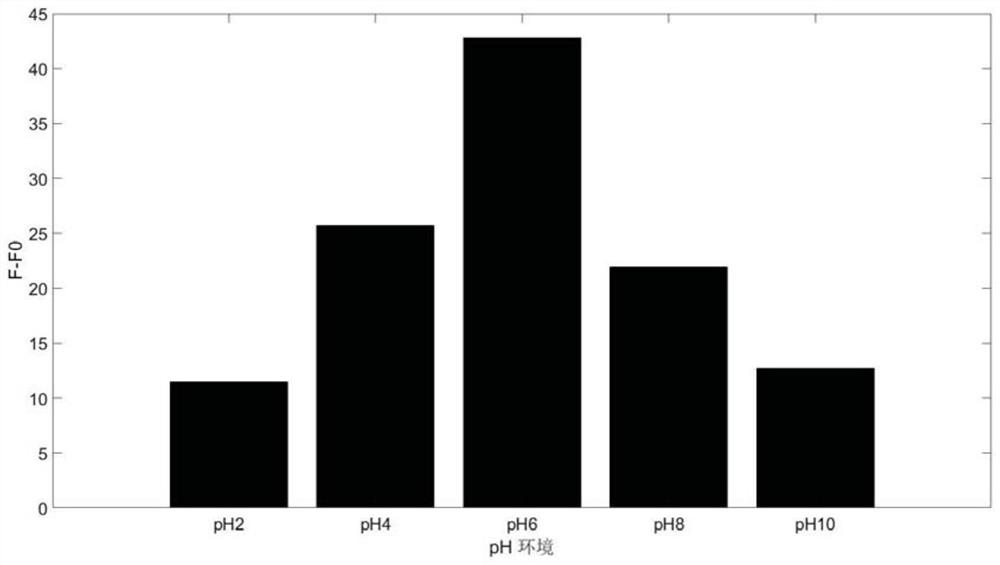Heavy metal ion rapid detection method based on DNA hydrogel
A technology for heavy metal ions and detection methods, which is applied in the field of rapid detection of heavy metal ions based on DNA hydrogel, can solve the problems of complex instruments and professionals in the center, and is not suitable for real-time testing, and achieves low biological toxicity and short preparation time. , The method is simple and effective
- Summary
- Abstract
- Description
- Claims
- Application Information
AI Technical Summary
Problems solved by technology
Method used
Image
Examples
Embodiment 1
[0026] Hydroxyamide-DNA strands including A strands and T strands (300-700 μm, dissolved in ultrapure water) were mixed with 5% acrylamide monomer aqueous solution, respectively. The mixed solution was placed in a vacuum desiccator at room temperature (≈15-35° C.) for 10-30 minutes to remove air, and then 1.4% polyammonium sulfate and tetramethylethylenediamine aqueous solution were added. The reaction tubes were immediately placed in a vacuum desiccator to remove air, and polymerized for 15 minutes to produce polyacrylamide-deoxyribonucleic acid conjugates P-SA and P-ST. After the reaction, the polymer product is purified by ultracentrifugal filters with a molecular mass of 50–100 kDa to remove unpolymerized monomers and other small molecules for further use.
[0027] To generate DNA hydrogels for the detection of heavy metal ions, a solution of P-SA oxygen ribozyme strands (100–500 μm in molar ratio) was mixed with an equal amount of substrate strands in triacetate buffer. ...
Embodiment 2
[0030] Hydroxyamide-DNA strands including A strands and T strands (300-700 μm, dissolved in ultrapure water) were mixed with 10% acrylamide monomer aqueous solution, respectively. The mixed solution was placed in a vacuum desiccator at room temperature (≈15-35° C.) for 10-30 minutes to remove air, and then 1.4% polyammonium sulfate and tetramethylethylenediamine aqueous solution were added. The reaction tubes were immediately placed in a vacuum desiccator to remove air, and polymerized for 15 minutes to produce polyacrylamide-deoxyribonucleic acid conjugates P-SA and P-ST. After the reaction, the polymer product is purified by ultracentrifugal filters with a molecular mass of 50–100 kDa to remove unpolymerized monomers and other small molecules for further use.
[0031] To generate DNA hydrogels for the detection of heavy metal ions, a solution of P-ST deoxyribozyme strands (100–500 μm molar ratio) was mixed with an equal amount of substrate strands in triacetate buffer. In o...
Embodiment 3
[0034] Hydroxyamide-DNA strands including A strands and T strands (300-700 μm, dissolved in ultrapure water) were mixed with 8% acrylamide monomer aqueous solution, respectively. The mixed solution was placed in a vacuum desiccator at room temperature (≈15-35° C.) for 10-30 minutes to remove air, and then 1.4% polyammonium sulfate and tetramethylethylenediamine aqueous solution were added. The reaction tubes were immediately placed in a vacuum desiccator to remove air, and polymerized for 15 minutes to produce polyacrylamide-deoxyribonucleic acid conjugates P-SA and P-ST. After the reaction, the polymer product is purified by ultracentrifugal filters with a molecular mass of 50–100 kDa to remove unpolymerized monomers and other small molecules for further use.
[0035]To generate DNA hydrogels for the detection of heavy metal ions, a solution of GR-5 deoxyribozyme strands (100–500 μm molar ratio) was mixed with an equal amount of substrate strands in triacetate buffer. In ord...
PUM
| Property | Measurement | Unit |
|---|---|---|
| molecular weight | aaaaa | aaaaa |
Abstract
Description
Claims
Application Information
 Login to View More
Login to View More - R&D
- Intellectual Property
- Life Sciences
- Materials
- Tech Scout
- Unparalleled Data Quality
- Higher Quality Content
- 60% Fewer Hallucinations
Browse by: Latest US Patents, China's latest patents, Technical Efficacy Thesaurus, Application Domain, Technology Topic, Popular Technical Reports.
© 2025 PatSnap. All rights reserved.Legal|Privacy policy|Modern Slavery Act Transparency Statement|Sitemap|About US| Contact US: help@patsnap.com



